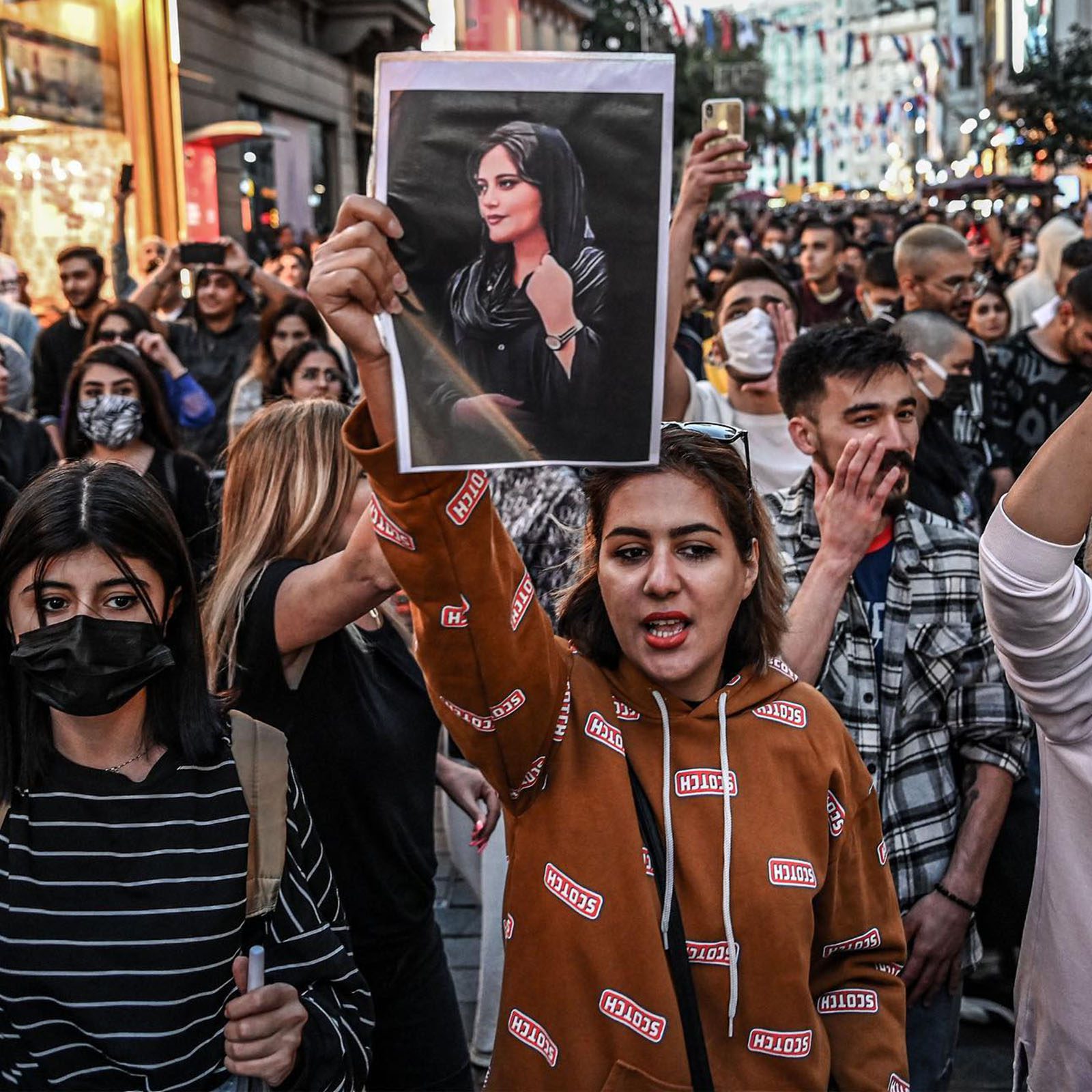People from all around the world continue to protest after the tragic death of a young woman who died in the hands of Iran’s morality police for showing a piece of her hair. This 22-year-old’s name was Mahsa Amini. Her hair was not completely covered by a hijab, or head covering, as required of all women by the dictatorship. Now, women from everywhere, including notable figures such as Swedish EU lawmaker Abir Al-Sahlani and French actress Juliette Binoche are cutting their hair in solidarity, according to articles by The Hill and Reuters. At this current moment, we are witnessing a revolution for women’s rights in Iran—one that was started by hair.
There are many historical events that led up to Iranian women not being able to show their hair in the present day, but to get a clear picture of that, one would have to revisit the last 100 years of Iranian women’s hair trends. Here is what women’s hair in Iran has looked like over the past century.
1910s
The Qajar dynasty was the ruling body in Iran during the 1910s. It was a hierarchal government that was heavily influenced by Shia Muslim religious traditions, causing many women to fully cover their hair in accordance with their devout faith, according to this Vox article.
1920s
In the 1920s, the rise of the much more modern regime, the Pahlavi Dynasty, started by Reza Shah, was taking place as said in this NYU Iranian history timeline. Just as in the United States, during this period, women in Iran had more freedoms and were embracing them. This came with the freedom to express themselves and experiment with beauty. Hair was often still covered, but only partially, with a more decorated shawl or scarf. Elegant curls were often the styling of choice during this time.
1930s
Because the new ruling body was more progressive and less religious, Reza Shah made a 1936 law that didn’t permit women to wear traditional head coverings in public even if it was a part of their religion. For this reason, many women in the 1930s started wearing hats to replace a hijab. Women often pinned their hair back for a very sleek look.
1940s-1950s
In the 1940s, a lot of women ditched any kind of head covering and wore their hair down naturally or would style it in accordance with their natural curls. Not much changed in the next decade.
1960s
Mohammad Reza Shah Pahlavi, the next ruler in the Pahlavi Dynasty, introduced the White Revolution, which was a set of reforms that amongst many things allowed for more women’s rights. It granted women the right to vote, moved the minimum legal age for marriage to 18 years-old, and improved women’s legal rights in divorce, following many of the freedoms of the United States as this regime envisioned. As far as hair goes, women had similar hairstyles as those in other modern Western societies in the 1960s: a classic updo on top of the head that one would associate with that era.
1970s
Up until the revolution in 1979, Iranian women followed the hippie-era style with their hair, letting it grow long and leaving it natural.
1980s-Present Day
Some more traditional Iranian people did not approve of all the Western, modern changes that the Pahlavi regime was making. They wished to go back to a “better time” in Iran. Ayatollah Khomeini led an uprising that opposed the Shah and the White Revolution. He ultimately took over and enforced very strict rules, using violence for people to follow them as a dictator. Iranian women no longer possessed equal rights. Anything that Western societies approved were banned and were replaced by extremist Muslim traditions and laws. Women were required to wear a hijab, not showing one bit of their hair, or were killed.
When Ayatollah Khomeini passed, his successor in 1989, Ali Khamenei, still kept these strict rules, but, over time, women slowly showed bits of hair while still wearing a hijab. The 2010s were the start of the Green Movement in Iran: a series of large protests following the 2009 election in which a very unpopular candidate, in accordance with the Islamic regime, Mahmoud Ahmadinejad, supposedly won. People called for a fair democracy and peaceful change in Iran, according to the United States Institute of Peace.
Their efforts were not successful. Basic human rights, women’s rights, and religious freedom are still not granted to Iranian people. This leads up to the current day where certain strict officers of the “morality police” are able to arrest and punish people for not following their laws — including not covering hair in public. Amini was just one of their victims.


